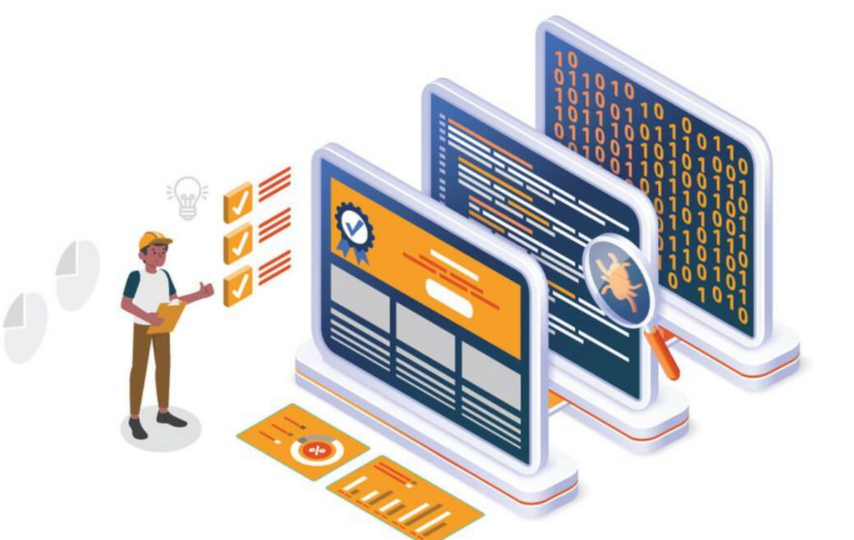The universe is constantly in motion, with everything having its own expiration date—even data isn’t exempt.
The instant data finds its way into a datastore after the meticulous ETL (Extract, Transform, Load) or ELT (Extract, Load, Transform) process, a striking revelation emerges—60% of its essence dissipates, whether it’s in terms of money, business potential, or legal importance.
This principle remains unaltered even within the realms of quality engineering—a field where precision and timing can redefine success.If your business takes days to glean insights from the moment data is born,your competitive edge is slipping away. So,consider this your wake-up call to the ticking clock of data’s value!
Hence, the data strategy for your enterprise will be to get the fastest possible time to insight. In the realm of quality engineering, the quicker your data turns into real-time insights, the better your edge over competitors. It’s not just about analyzing data; it’s about instant insights that keep up with your business’s heartbeat in the IT landscape.
A Shift Towards Real-Time Insights
Let’s hop into a time machine and revisit old-school software development. In the traditional waterfall approach, crafting software was like meticulously planning, building a manually coded structure, and testing its functionality to unveil the final product. Seems alright, doesn’t it? Well not really… This approach often meant that developers had completed the entire software before anyone got to interact with it. Imagine if a critical bug was discovered—too late!
Now, let’s fast-forward to the present. You’ve pressed the ‘update’ button on this traditional approach by bringing in real-time insights. It’s akin to having a progress report at every step of coding, offering immediate feedback to the developers. If a line of code needs tweaking, you do it right then and there. That’s how real-time insights operate in quality engineering.
Research shows that 44% of businesses witness a substantial surge in customers and revenues upon implementing real-time analytics. It proves this shift is monumental.
It’s a game-changer. Let’s uncover how this transformation is revolutionizing the landscape of quality engineering.
Real-Time Insights: Elevating Quality Engineering to New Horizons!
This transition to real-time insights completely alters the coding experience. Bugs are spotted early, ensuring a much smoother final product. Moreover, it’s faster. No waiting for a final review at the end. You achieved speed, quality, and a competitive edge, ALL !
Here’s a look at the 3 key benefits of real-time insights in the realm of quality engineering:
1. Early Defect Discovery
This early detection is a significant paradigm shift, particularly when it comes to software security testing. Spotting and rectifying security-related defects early in the development cycle forms the foundation of robust software security testing.
It’s similar to fixing a minor code vulnerability before it escalates into a critical security breach—saving both time and resources, and ultimately ensuring a more secure, robust software product.
2.Faster Time-to-Market
By identifying and resolving issues promptly, development teams can streamline the entire development process. It’s like executing code in a high-speed compiler, bypassing any bottlenecks.
The result?
A quicker release of high-quality software.
Real-time insights act as our performance enhancers, supporting agile and DevOps practices. It’s the equivalent of having a multi-core processor in a world of single-core—parallelism, speed, and a definitive edge in the race to the market.
3. Efficient Resource Utilization
With real-time insights at their fingertips, IT leaders can allocate resources with surgical precision. It’s comparable to having a dynamic GPS guiding you through the development journey, highlighting areas that require additional focus. You can swiftly identify bottlenecks, underutilized resources, or potential roadblocks and distribute resources accordingly.
This efficient resource utilization optimizes the development process, enabling teams to achieve maximum output with minimum input.
What will you get?
A streamlined, cost-effective operation that propels the project to success without unnecessary expenditures or delays.
Implementing Real-Time Insights in Quality Engineering
To leverage the benefits of real-time insights, IT leaders need to implement as well as follow a few processes:
1. Enhancing Precision with Automation
Investing in advanced automated testing tools significantly contributes to the precision and efficiency of quality engineering.
Consider Jenkins—an open-source automation server revolutionizing software development. It triggers automated tests, including crucial ones for software security testing, upon new code integration, catching issues early for a polished product.
Likewise, JIRA—an agile project management tool—is invaluable. Integration with testing tools streamlines workflow, allowing testers to log issues directly into JIRA. This boosts collaboration, expediting issue resolution and enhancing product quality.
These tools are indispensable, offering real-time feedback on application performance, functionality, and user experience. Their seamless integration into the development pipeline ensures immediate insights for the development team, allowing for early issue identification and resolution.
2. Keeping a Watchful Eye on Performance
Ever thought of continuous monitoring as having a live dashboard for an e-commerce website?
It’s as if you have this control center where you can see how many users are on the site, what products they’re looking at, and if there are any errors during their interactions.
In this live dashboard, if you notice a sudden spike in the page load time or a surge in error rates during a flash sale, real-time data analytics would be able to swiftly pinpoint that. It’s like a performance radar, lighting up as soon as things start going wrong.
With this instant knowledge, you can dive in, identify the root cause—maybe it’s a server glitch or a coding issue—and fix it right away.
3. Making Data-Driven Decision With Insights
When you dive into real-time insights derived from testing and monitoring, it’s akin to putting on night-vision goggles in the dark. Suddenly, you can see what’s happening and navigate with precision.
These insights aren’t just numbers and graphs; they tell a story about your software’s behavior. It’s like unraveling clues in a mystery, helping you pinpoint exactly where to improve.
It adds the perfect ingredients to make the product not just good, but exceptional. It’s all about hitting the bullseye and ensuring the development efforts are sharp and on target, in sync with the project’s goals.
4. Unifying Teams to Achieve Excellence
Encouraging a collaborative work environment is crucial for successful quality engineering. This collaborative approach involves close interaction among development, testing, and operations teams throughout the development lifecycle.
Sharing real-time insights seamlessly across teams ensures a cohesive understanding of the project’s progress and challenges. This alignment promotes a unified effort towards the common goal of delivering a high-quality product.
Achieve More With Real-Time Insights
It’s undeniable that embracing real-time insights in quality engineering is essential for IT leaders aiming to thrive in the fast-evolving tech environment. With the right tools and processes in place, your business can unlock the potential of real-time insights, propelling innovation, speeding up product development, and most importantly delivering outstanding software solutions. So, the stage is set for you to embrace this transformation and redefine the future of quality engineering. Let’s make waves and craft a future that’s all about exceptional quality!








